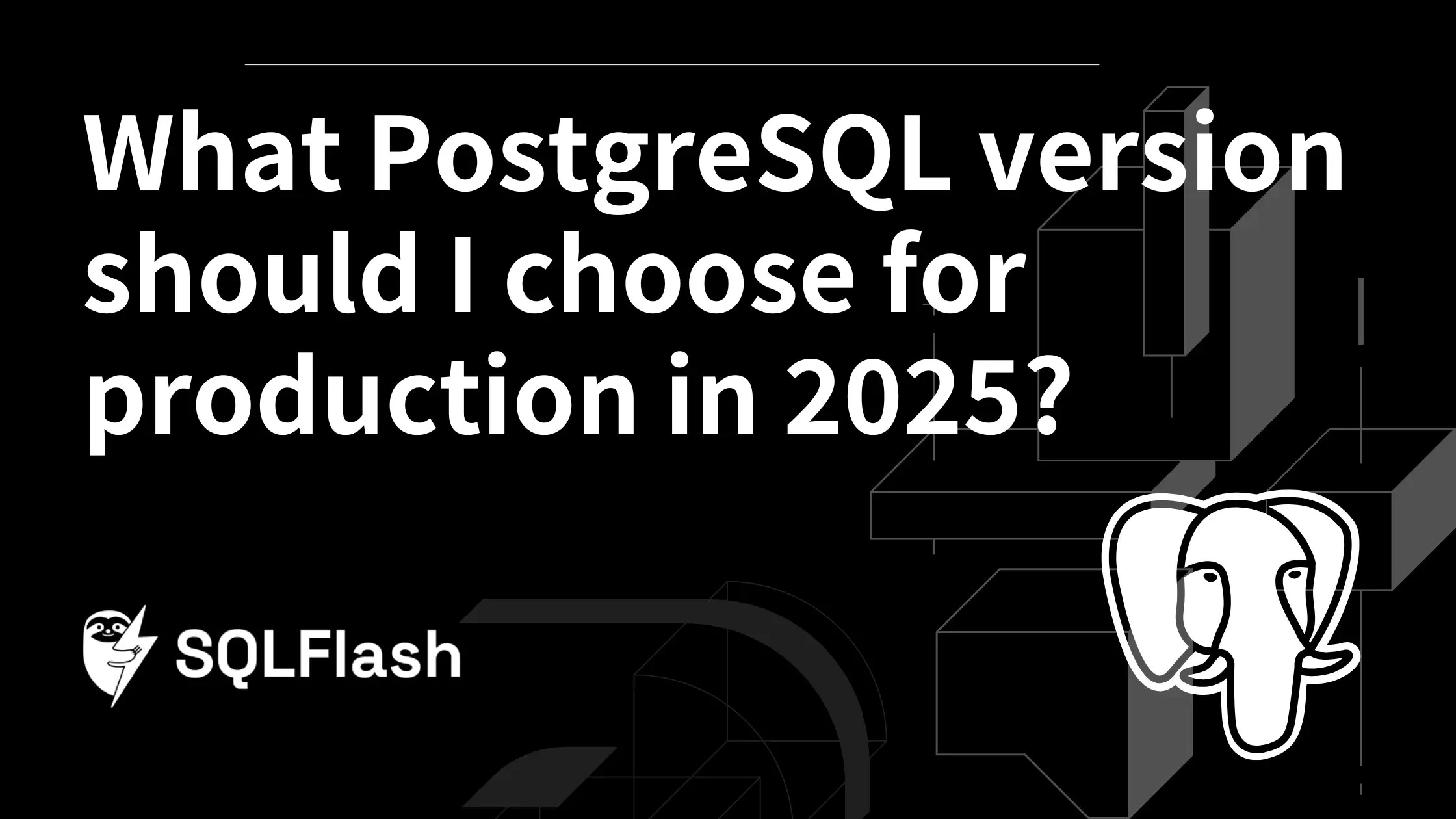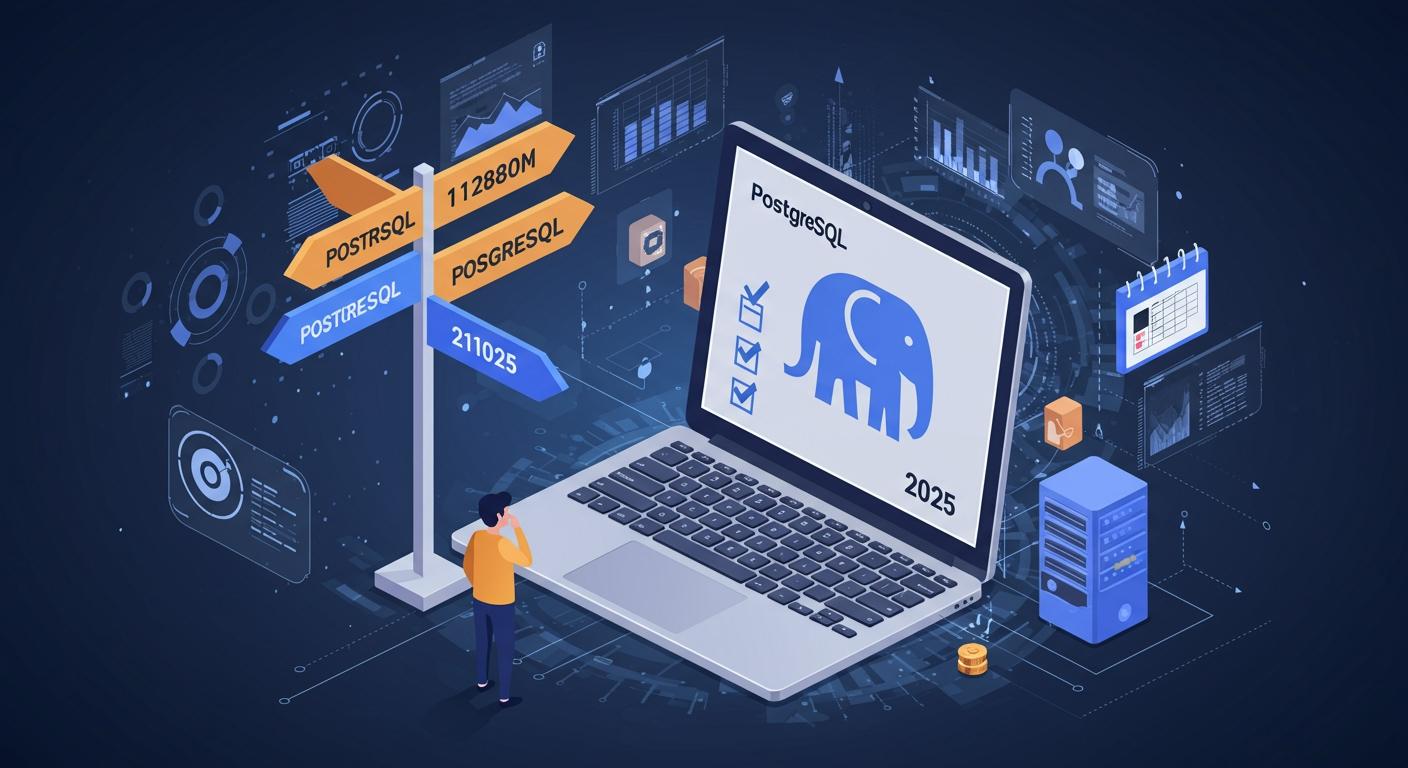What PostgreSQL version should I choose for production in 2025?



Pick PostgreSQL 16 for your production setup in 2025. You want a version with good support, strong stability, and features that work well. Most big versions get help for five years after they come out. You can check this in the support policy:
You get updates and fixes for five years after release.
After five years, you get one last small update before the version ends.
This plan helps you stay safe and keeps your system working well.
Pick PostgreSQL 16 for production in 2025. You will get five years of support. This keeps your system safe and up to date.
Moving to PostgreSQL 16 makes your system more stable. It fixes problems found in old versions. This lowers the chance of surprise issues.
PostgreSQL 16 has new features that boost performance. Joins are faster and replication works better. Your apps will run more smoothly.
Make a careful plan before you upgrade. This helps stop data loss and downtime. Test in a safe place first for a smooth change.
Keep doing regular maintenance after you upgrade. This keeps your database healthy and quick. It also helps it work well for a long time.
You want a database that will not leave you alone. PostgreSQL 16 gives you updates and security fixes for many years. When you pick a version, you should check when support ends. This helps you avoid quick upgrades or paying more money. Look at this table to see how long each version gets help:
| Release | Release date | End of life |
|---|---|---|
| PostgreSQL 14.0 | September 30, 2021 | November 12, 2026 |
| PostgreSQL 12.2 | October 3, 2019 | November 14, 2024 |
| PostgreSQL 12.8 | October 3, 2019 | November 14, 2024 |
PostgreSQL 12 will stop getting updates soon. If you use it, you might have to pay more for extra help after March 1, 2025. Upgrading to PostgreSQL 16 keeps your system safe and avoids these problems. You get five years of support, so you can plan upgrades without worry.
You need a database that works well every day. PostgreSQL 16 is better because it has many fixes from past years. Older versions like 10 and 12 had more problems and surprises. You can see this in the table below:
| PostgreSQL Version | Stability Issues Observed | Recommendations |
|---|---|---|
| 10 | Major upgrade failures due to WAL changes | Upgrade only after reaching minor version .2 |
| 12 | Significant unintended behaviors | Upgrade only after reaching minor version .2 |
| 11 | Fewer issues compared to 10 and 12 | Consider upgrading after minor version .2 |
PostgreSQL 16 learned from these old problems. The team fixes bugs fast and gives updates often. But even new versions can have big security problems sometimes. For example, a recent update fixed a bug that let a superuser run bad code during restore. This shows why you must use a supported version and update quickly.
You want features that help your apps run better and faster. PostgreSQL 16 brings new tools and improvements that really help. Here is a quick look at what you get:
| PostgreSQL Version | Headline Features | Notable Improvements | Use Cases |
|---|---|---|---|
| 13 | Incremental Sorting | Parallelized vacuuming of indexes, Space savings from de-duplication | Reduces query times for large databases |
| 14 | JSON Conveniences, Multiranges | LZ4 compression, Send multiple queries | Streamlines applications using JSON |
| 15 | SQL MERGE Command | Improved sort performance, Replication of prepared transactions | Simplifies data synchronization |
| 16 | Parallelization of FULL and Internal Right OUTER Hash Joins | Logical replication from standby servers | Boosts performance of high-demand applications |
| 17 | Logical Replication Enhancements | New SQL/JSON capabilities, Incremental backup features | Strengthens reliability of critical applications |
With PostgreSQL 16, you get faster joins and better replication. Your system can handle more users and bigger jobs. You also get tools that make backups and recovery easier. Picking PostgreSQL 16 means you get new features and strong reliability. You do not risk your data on something too new or miss out by using an old version.
Tip: If you choose PostgreSQL 16, you get long support, strong stability, and great features. You will be ready for 2025 and later.
Sometimes, you use an old system with an older PostgreSQL version. Upgrading can seem scary or cost a lot. But using versions without support is dangerous. You do not get security patches or bug fixes. Your system can be attacked or break down. Waiting to upgrade makes things riskier and harder later. Old systems can become big problems for your business.
| Risk Type | Description |
|---|---|
| Lack of Security Patches | If you use unsupported versions, you do not get new security patches. This makes your system weak and easy to attack. |
Note: If you do not upgrade, your system can be hacked. Think about the cost to upgrade and the risk of old software.
You may want new features to help your business or make things faster. PostgreSQL 16 and newer versions have tools that help you work better. Asynchronous I/O makes reading data faster. OAuth authentication keeps your system safe and works with new identity tools. More SQL support and new extensions give you more choices.
Asynchronous I/O helps your system run faster.
OAuth 2.0 authentication keeps your data safe.
Upgrades are quicker with better tools.
Better observability lets you see how your system works.
| Feature | Benefit |
|---|---|
| Asynchronous I/O | Makes reading data faster and fixes old slowdowns. |
| Virtual generated columns | Saves space and means fewer updates. |
| Skip scans for multicolumn indexes | Uses indexes better, even if some checks are missing. |
| Temporal constraints | Keeps time-based data correct and trustworthy. |
You might want to use the newest PostgreSQL version right away. Many developers do this for AI and big jobs. PostgreSQL was the most used database by developers in 2024. Using new versions gives you new features but can be risky.
| Issue Type | Description |
|---|---|
| Upgrade Complexity | Big upgrades can break old things and need careful planning. |
| Resource Investment | Upgrades take time and work, especially if you are far behind. |
| Hesitation to Upgrade | Some people wait because their system works fine now. |
Tip: If you want new features fast, test them safely first. Using new versions early helps you, but you must plan well to avoid trouble.

Image Source: unsplash
You need a good plan before you upgrade your database. Careful planning helps you avoid mistakes. It also keeps your data safe. If you skip planning, you could lose data or have downtime. Always follow these steps:
Get your system ready before you start the upgrade.
Upgrade the leader node first to see if it works.
Upgrade a replica node next to check for problems.
Do post-upgrade steps to make sure everything is okay.
Before you begin, check that replica nodes can talk to the leader node with SSH. Keep an extra node ready in case you need to go back or fix something.
You should also stop all writing on the leader node. Back up your settings and files. This keeps your data and setup safe. Planning helps you find problems early. It gives you time to fix them.
Testing your upgrade in a safe place helps you find problems early. You want to make sure your upgrade works and does not break your apps. Set up a new instance with the version you want. Use logical replication to copy your data. This lets you see if everything works right.
Make a new PostgreSQL instance with the version you want.
Turn on logical replication on your current database.
Make a publication on the source.
Make a subscription on the target.
Make sure replication is up-to-date before you switch.
Rolling upgrades let you upgrade one replica at a time. This keeps your service running and means less downtime.
Testing in a test environment gives you confidence. You can fix problems without hurting your main system.
After you upgrade, you need to keep your database healthy. Doing regular maintenance keeps your system fast and safe. If you skip this, your database can slow down or fill up. Here are important jobs you should do:
| Maintenance Task | Description |
|---|---|
| Backup Creation | Make backups often so you can get your data back if needed. |
| Vacuuming | Clean up the database to save space and keep it fast. |
| Updating Statistics | Update statistics so queries run faster. |
| Log File Management | Manage log files so they do not fill up your disk. |
You should vacuum and analyze your database every day, especially after an upgrade. This keeps your system working well and helps you find problems early.
Good maintenance keeps your data safe and makes sure your database works well for a long time.
Planning upgrades early keeps your database safe and your data right.
Testing and watching your system helps you find problems soon.
PostgreSQL has a big community that helps you learn and fix issues. You can save money and run your system better. Watch for new versions and plan to upgrade early. You have what you need to keep your database strong and ready for the future. 🚀
Unsupported versions do not get security updates or bug fixes. You risk data loss or attacks. You keep your system safe when you use a supported version.
PostgreSQL 16 gives you new features, strong stability, and long support. You get improvements tested by many users. You avoid the risks of older or too-new versions.
Testing helps you find problems early. You see if your apps work with the new version. You avoid downtime and data loss by testing first.
Planning helps you avoid mistakes. You keep your data safe and reduce downtime. You know what steps to follow, so your upgrade goes smoothly.
SQLFlash is your AI-powered SQL Optimization Partner.
Based on AI models, we accurately identify SQL performance bottlenecks and optimize query performance, freeing you from the cumbersome SQL tuning process so you can fully focus on developing and implementing business logic.
Join us and experience the power of SQLFlash today!.